|
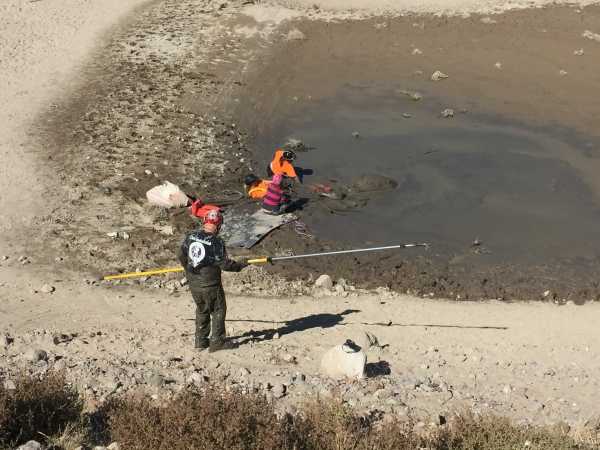
An all too frequent challenge for large animal rescuers involves a horse or similar sized livestock that has fallen into a ditch or other small vertical opening, gotten bogged or has been involved in some kind of ground collapse. Extricating these animals can be done safely, however specific procedures should be followed.
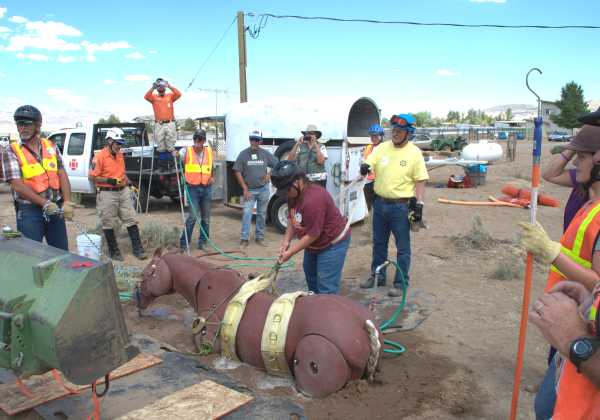
A "bogged horse" exercise is often chosen for training days because extricating a bogged horse also includes the approaches and procedures required to remove a horse from a ditch, trench or moderate ground collapse, with the added challenge of mud or wet sand that creates suction around the horse. Therefore many of the approaches represented in freeing the bogged horse would apply to other large animal-in-ground rescue situations.
Always remember that serious animal entrapment situations typically take time to resolve. Get organized and remove the animal safely.
1. Keep the scene calm and organized.
|
Extrications can require a lot of people and equipment. A disorganized and noisy scene can further stress the animal.
Someone with relevant technical experience must be in charge. There can only be one boss.
Someone with relevant experience needs to maintain scene safety. People not directly involved in hands-on activities need to be kept away.
A needs assessment should be made and the necessary resources ordered.
|
|
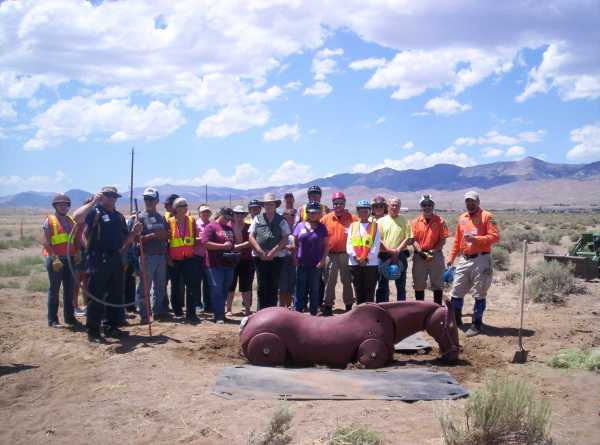
|
2. Consider the animal's immediate needs.
|
Does the animal need water? Dehydration can be serious.
Is the animal hypothermic? Should the animal be blanketed?
Is the animal hyperthermic and needs cooling? Even in a bog the back of the animal can get quite warm.
Would a little hay or grass be beneficial in keeping the animal calm?
|
|
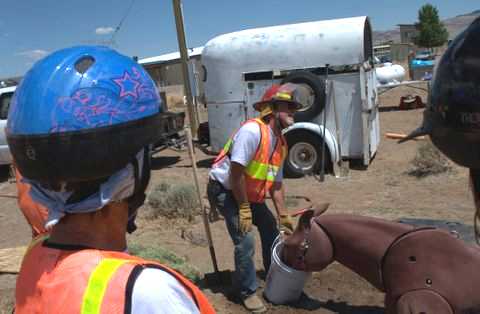
|
3. Call for a veterinarian.
The animal may require IV fluids. It may need to be sedated immediately prior to extrication as in some instances animals may flail about and can hurt themselves on the lifting equipment once they feel their feet returning to solid ground. If sedated, the animal must remain sedated until freed from the lifting device and lifting equipment removed, then monitored.
4. Plan your work and work your plan.
|
Avoid reacting in knee-jerk fashion. Develop an extrication plan. Brief all hands-on rescue and support personnel before starting. Stick to your plan so long as you are achieving results.
Plans may have to be altered if the resources you need do not arrive or circumstances warrant a new approach. If the plan changes, everyone involved in the hands-on activities must know of the changes before they are implemented.
|
|
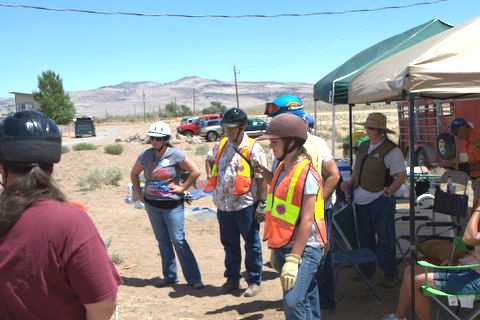
|
5. Use proper protective equipment.
At minimum: an appropriate helmet, gloves, appropriate hard-soled shoes or boots.
(During this exercise, as the temperature outside was in the mid 90s and we were working with a mannequin, some allowances were made with respect to protective headgear and clothing. However in any actual emergency and when working around mechanical equipment in any training exercise, all persons in the immediate area need to wear helmets, gloves, appropriate work clothes and boots. A number of unexpected things can happen and having an unprotected rescuer become injured will only further complicate the rescue effort. Safety of people trumps all other priorities!)

The training information presented in these information sheets and guides is offered for illustrative and volunteer refresher purposes only. It is not a substitute for actual hands-on training.
|
Press Back to return to the page which brought you here
| 




